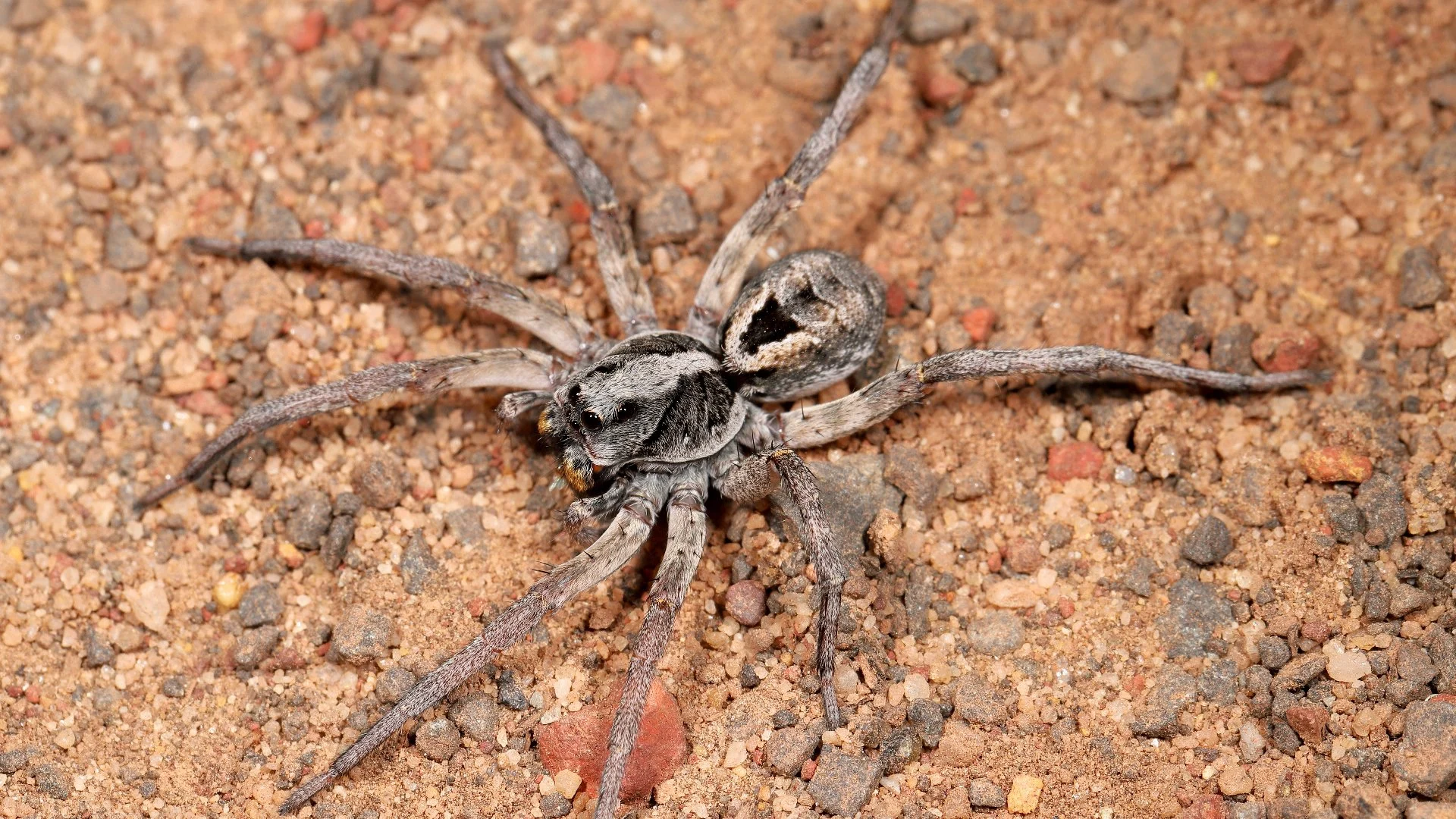When you hear the name “Texas Wolf Spider,” you might imagine a creature straight out of a spooky movie. But don’t worry! This spider is not as scary as it sounds. In fact, the Texas Wolf Spider is quite interesting and has some cool features that make it a unique part of Texas wildlife. Let’s dive into the world of the Texas Wolf Spider and learn what makes it so special.
What Is the Texas Wolf Spider?
The Texas Wolf Spider is a large and impressive spider that can be found across the state of Texas. Its scientific name is Rabidosa rabida, and it belongs to a group of spiders known as wolf spiders. Unlike many other spiders that build webs to catch their prey, wolf spiders are ground hunters. They use their speed and agility to chase down and capture insects.
One of the most noticeable features of the Texas Wolf Spider is its size. It can grow up to 1.5 inches in body length, with legs that can extend even further. Their bodies are usually brown or gray with distinctive patterns that help them blend into their surroundings. This camouflage is a great way for them to hide from predators and sneak up on their next meal.
Where Can You Find the Texas Wolf Spider?
As its name suggests, the Texas Wolf Spider is commonly found in Texas. However, you might also spot them in other parts of the southern United States. These spiders prefer environments where they can hide easily and have plenty of places to hunt. You might find them in gardens, under rocks, or in piles of leaves. They often build their homes in burrows or under natural debris, which helps them stay safe and keep cool.
Texas Wolf Spiders are most active at night. If you go outside after dark and look closely around your yard, you might see their shiny eyes reflecting in the light. They use their excellent vision to find prey and navigate their environment in the dark.
What Do Texas Wolf Spiders Eat?
Texas Wolf Spiders are fierce predators. They primarily eat insects, such as crickets, beetles, and ants. Sometimes, they might even hunt small spiders or other invertebrates. These spiders do not build webs to catch their food. Instead, they use their strong legs and quick movements to chase down their prey.
When a Texas Wolf Spider captures its food, it injects venom into its prey to subdue it. The venom helps to digest the food so the spider can consume it more easily. While the venom might sound scary, it is not dangerous to humans. The Texas Wolf Spider is more interested in catching insects than bothering people.
How Do Texas Wolf Spiders Reproduce?
Reproduction is a crucial part of the life cycle for Texas Wolf Spiders. In the spring, males will begin to search for females. They use special courtship dances to attract a mate. This dance involves the male waving his front legs and performing a series of movements to show that he is ready to mate.
Once a female wolf spider has chosen a male, they will mate. After mating, the female will lay her eggs in a special egg sac, which she carries with her until the eggs hatch. After the eggs hatch, the spiderlings (baby spiders) will climb onto their mother’s back for protection. The mother will carry them around until they are ready to fend for themselves.
Are Texas Wolf Spiders Dangerous?
It’s natural to be cautious about spiders, but the Texas Wolf Spider is not dangerous to humans. While its size and appearance might look intimidating, it is not aggressive towards people. The Texas Wolf Spider may bite if it feels threatened, but the bite is usually harmless. It might cause minor irritation, such as redness or itching, similar to a mosquito bite.
If you do get bitten by a Texas Wolf Spider, don’t panic. Clean the bite area with soap and water, and apply an over-the-counter anti-itch cream if needed. Most bites will heal on their own without any problems. However, if you experience severe pain or an allergic reaction, it’s a good idea to seek medical advice.
How Can You Tell If It’s a Texas Wolf Spider?
Identifying a Texas Wolf Spider is relatively easy once you know what to look for. These spiders are large and hairy, with a distinctive pattern on their bodies that can vary from brown to gray. They have eight eyes arranged in three rows, which is a common feature of wolf spiders. Their long, strong legs are another characteristic that helps them move quickly and hunt effectively.
If you spot a large spider running around on the ground, especially at night, it could very well be a Texas Wolf Spider. They are not web-builders, so you won’t find them hanging from trees or building webs in your home. Instead, look for them in places where they can hide and hunt.
How to Keep Texas Wolf Spiders Out of Your Home
If you prefer not to have Texas Wolf Spiders in your home, there are some steps you can take to keep them away. First, make sure to keep your home clean and free of clutter. Spiders like to hide in dark, undisturbed areas, so reducing clutter can make your home less attractive to them.
Sealing cracks and gaps around windows, doors, and foundations can also help prevent spiders from entering your home. If you have outdoor lighting, consider using yellow bulbs, which are less attractive to insects. Since Texas Wolf Spiders are attracted to insects, reducing the number of bugs around your home can help keep spiders away as well.
Fun Facts About the Texas Wolf Spider
Here are some fun and interesting facts about the Texas Wolf Spider that you might enjoy:
- Speedy Hunters: Texas Wolf Spiders are known for their speed. They can run fast to catch their prey and escape from danger.
- Excellent Vision: They have eight eyes, which give them great vision in low light conditions. This helps them see and catch insects at night.
- Camouflage Experts: The patterns on their bodies help them blend into their surroundings, making it easier for them to stay hidden from predators.
- Motherly Care: Female Texas Wolf Spiders carry their egg sacs and baby spiders on their backs, showing a lot of care and protection for their young.
Conclusion
The Texas Wolf Spider may seem like a fearsome creature at first glance, but it is a fascinating and beneficial part of Texas wildlife. By understanding more about these spiders, you can appreciate their role in nature and learn how to live alongside them without fear. Whether you encounter them in your garden or see them out on a nighttime adventure, remember that the Texas Wolf Spider is more interesting than it is frightening.
So the next time you spot a Texas Wolf Spider, take a moment to admire its unique features and consider how it helps balance the ecosystem. After all, every creature, no matter how big or small, has its place in the world!





